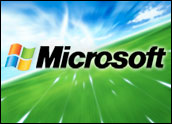
Microsoft is introducing a number of productivity tools to its Dynamics product line that should extend ERP (enterprise resource planning) functionality and data throughout the enterprise using the familiar user interface (UI) and productivity tools in the Microsoft Office system.
This release — specifically a license package of Microsoft Dynamics Client for Microsoft Office and SharePoint Server — is one of many introduced at the company’s Convergence 2007 conference this week in San Diego.
Business Productivity
Other new offerings — all unified by the theme of better “connections for the enterprise” — include the Microsoft Dynamics Sure Step, a new toolset for implementation, migration and upgrades; RoleTailored, a new design approach that builds on Windows Vista and the 2007 Microsoft Office system; a new online finance community for finance professionals; and the upcoming availability of Microsoft Dynamics GP 10.0, Microsoft Dynamics NAV 5.0 and Microsoft Dynamics SL 7.0.
“We are paving the way for building truly connected businesses, uniting the systems and the people who make companies successful in a sensible and relevant way,” said Jeff Raikes, president of the Microsoft Business Division.
“This new generation of Microsoft Dynamics products is designed to work seamlessly with Microsoft Windows Vista, Microsoft Office 2007 and Microsoft Office SharePoint Server 2007, and lays the foundation for new levels of business productivity,” he noted.
Unlocking Data
About 85 percent of the employees in organizations that have deployed an ERP system are not licensed to use the data, Microsoft pointed out, citing figures from AMR Research. Redmond is targeting those nonusers with the introduction of Microsoft Dynamics Client for Microsoft Office and SharePoint Server.
This package is a collection of up to 12 self-service applications built in Microsoft Office and SharePoint, as well as an enterprise license for Microsoft Office SharePoint Server 2007 and access rights to all the information and processes managed by a Microsoft Dynamics ERP system.
A demonstration of this combo of products was powerful, Yankee Group analyst Sheryl Kingstone told CRM Buyer.
“The UI integration means the system can send triggers and alerts through Microsoft Office in a manner it just couldn’t achieve before,” she said.
Microsoft is also exploring additional uses for data visualization, which should provide better system functionality to end users, Kingstone continued.
“This is another way to give the line-of-business user better access into information held in the system,” she explained.
Benefiting CRM
Microsoft Dynamics CRM is an example of this type of cross-enterprise access into larger systems and databases, Microsoft pointed out.
All of its reports, forms and processes for managing sales, marketing and customer service are presented to the user within Microsoft Office Outlook using these new tools.
“The new functionality gives a greater audience access to CRM data,” Kingstone agreed.





















































